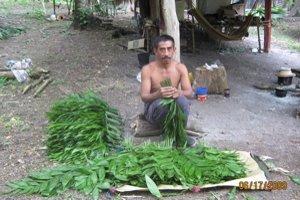
Local livelihoods are the ways in which people that live in and around the landscapes where WCS is supporting biodiversity conservation and ecosystem integrity are responding to material needs, identify them selves as members of social groups with specific values and needs, and evaluate and try to improve the quality of life. In this regard, local livelihoods have two important dimensions related to productive activities, one is nature appropriation and use and the other oneis ideological dimensions regarding how people see their world and values that give sense to their lives. Local livelihood have a human rights dimension also, because international regulations recognize peoples’ right to resource access to live with dignity,and WCS and other conservationist organizations have to be more responsible to make sure our conservation interventions fulfill international regulations. Subsistence problems faced by people living in and around landscapes were WCS works can represent challenges as well as opportunities to achieve conservation objectives. Threats are related to competition between human and wildlife needs. Opportunities are presented when people see their quality of life improved with the integrity of ecosystems maintained and people contributing to its conservation. In this way a circumscription is formed for the conservation contributing to the sustainability and opening for opportunities to build local financing sources reducing external donors dependence.